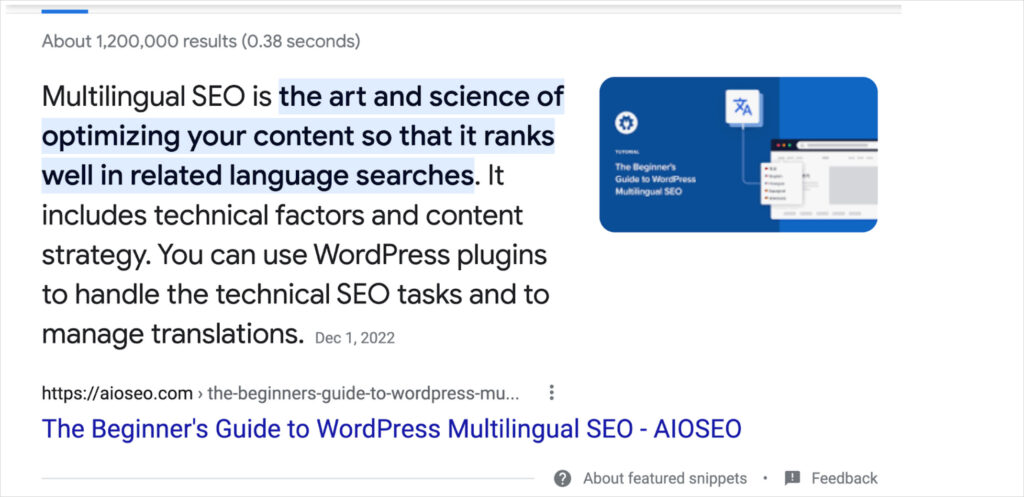Zero position, also known as position zero or featured snippets, refers to the boxed search result that appears at the top of some Google search engine results pages (SERPs), above the standard organic listings.
This featured snippet directly answers the user’s query by drawing relevant information from one of the top-ranking web pages.

The content in the Zero Position is automatically extracted by Google’s algorithms when it determines that a page contains a concise, direct answer to the searcher’s question. The snippet typically includes a summary of the answer, along with the page title, URL, and sometimes an image.
Common types of featured snippets include:
- Paragraph snippets: A brief text excerpt that answers the query.
- List snippets: A bulleted or numbered list, often answering queries that involve steps or rankings.
- Table snippets: Structured data presented in a table format, often for queries involving comparisons or data points.
- Video snippets: A video result with a thumbnail, title, and description, often appearing for “how-to” queries.

Achieving the Zero Position is a key goal for many SEO practitioners, as it can significantly boost visibility, click-through rates, and organic traffic. Strategies to optimize for featured snippets include:
- Identifying common question-based queries in your niche
- Providing clear, concise answers to those questions within your content
- Structuring your content with headers, lists, tables, and other formatting that Google can easily parse
- Ensuring your content is high-quality, authoritative, and relevant to the target query
- Optimizing your page for SEO before publishing
However, it’s important to note that the Zero Position can be a double-edged sword. While it can drive more traffic, it may also lead to lower click-through rates if users find the information they need directly on the SERP without clicking through to the website.